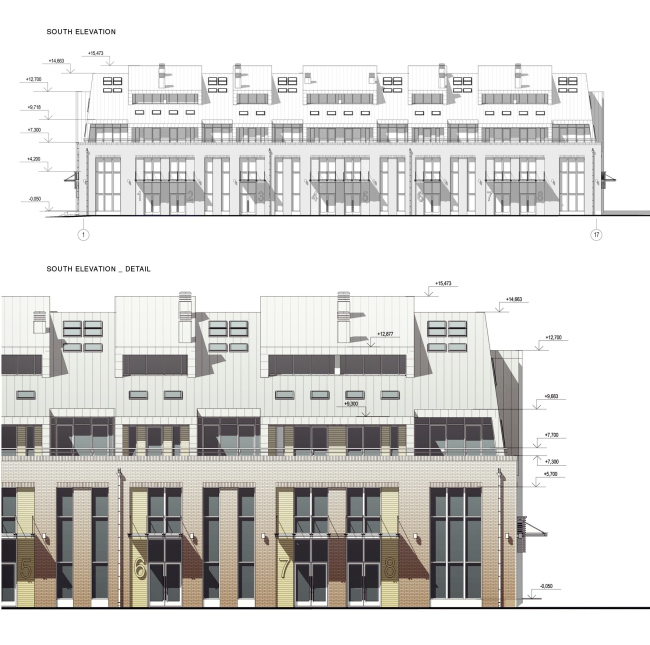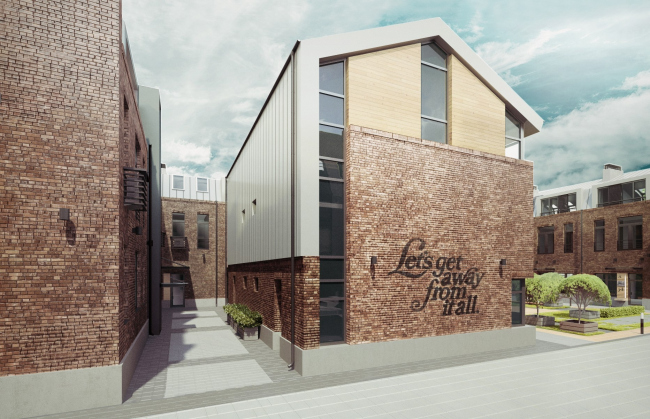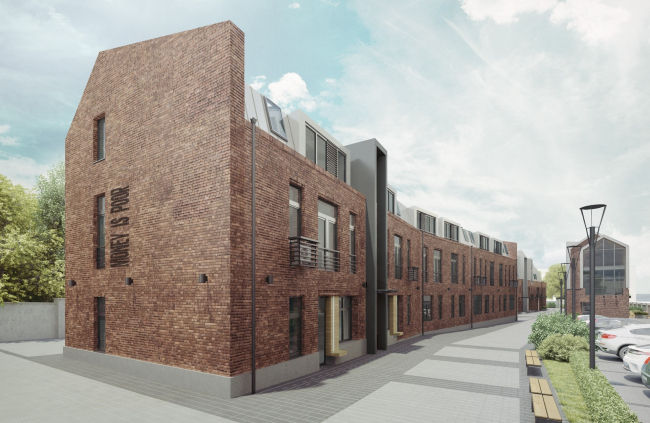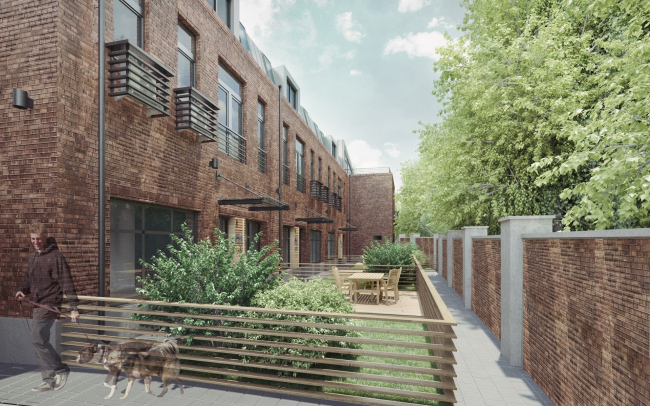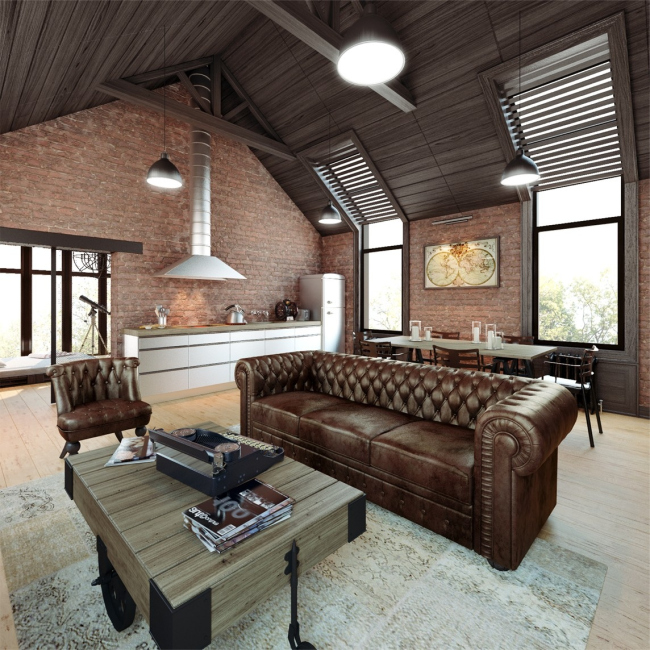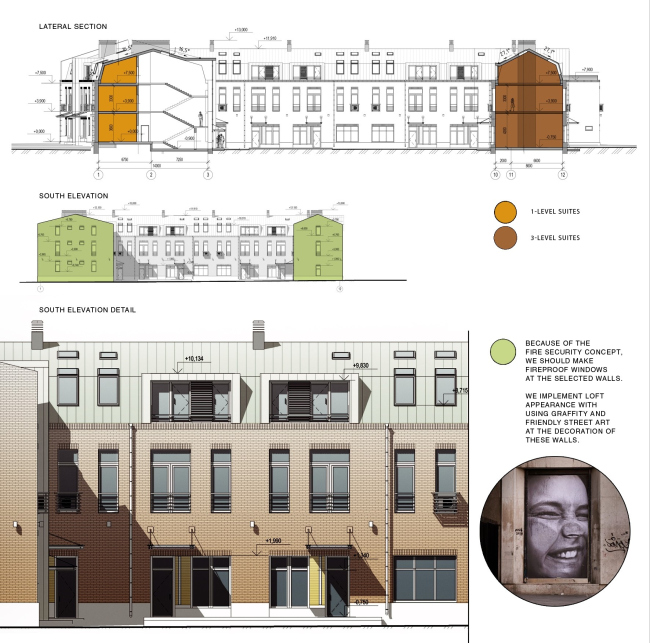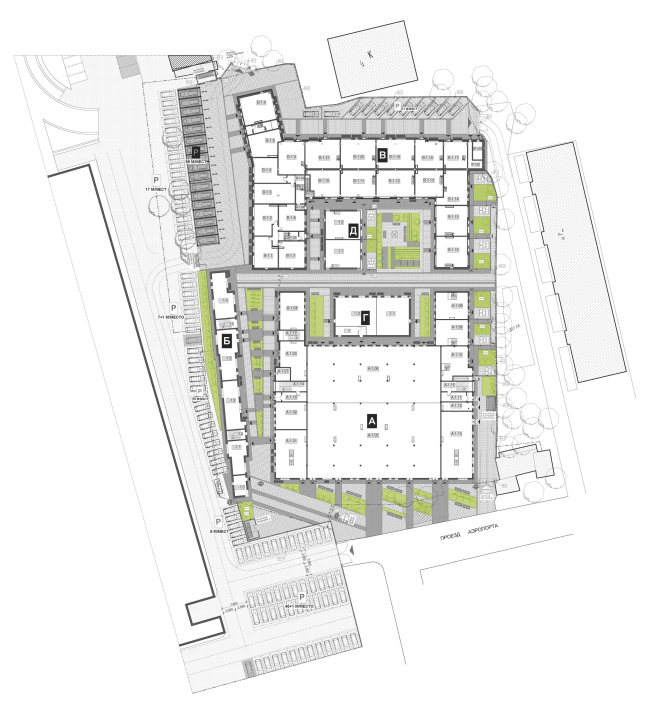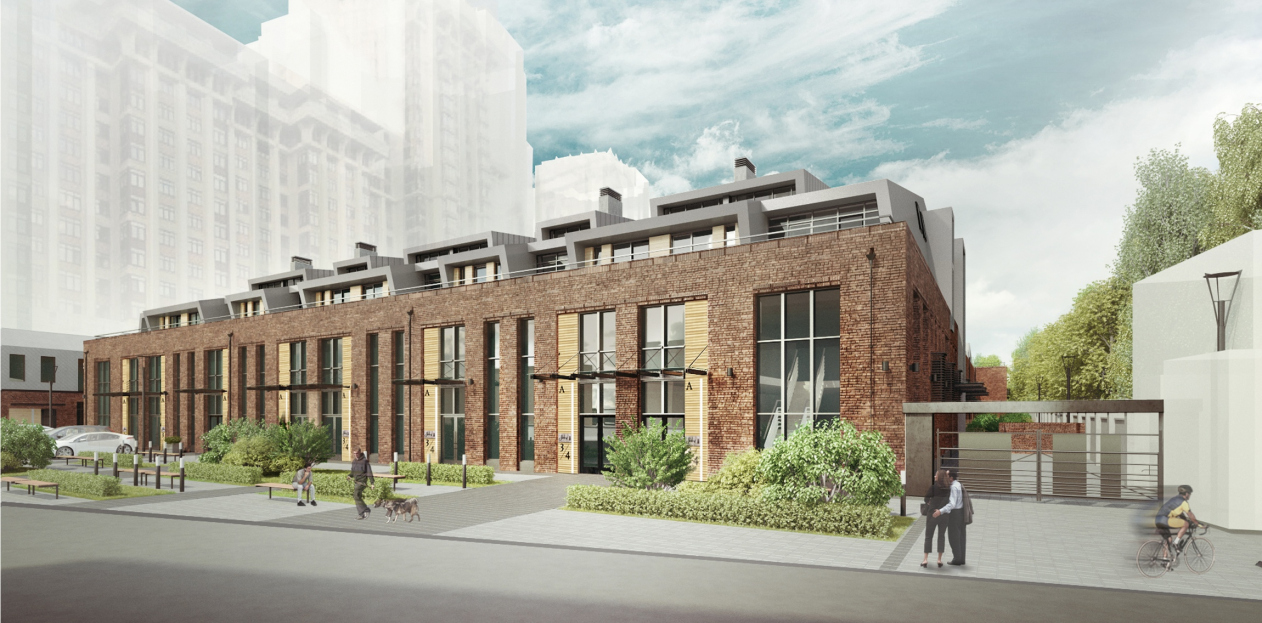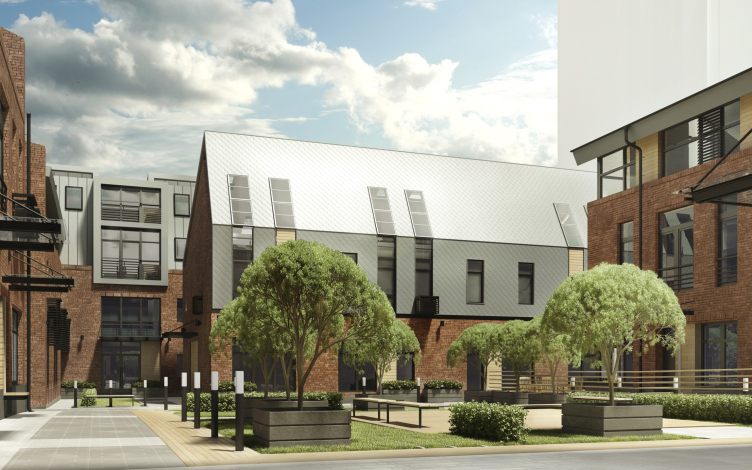The apartments will be built in the vicinity of the
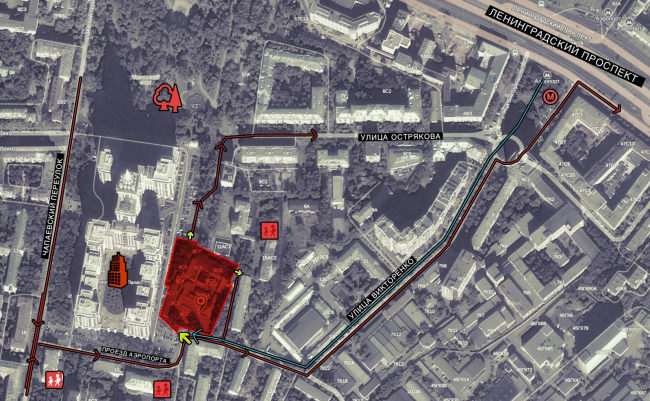
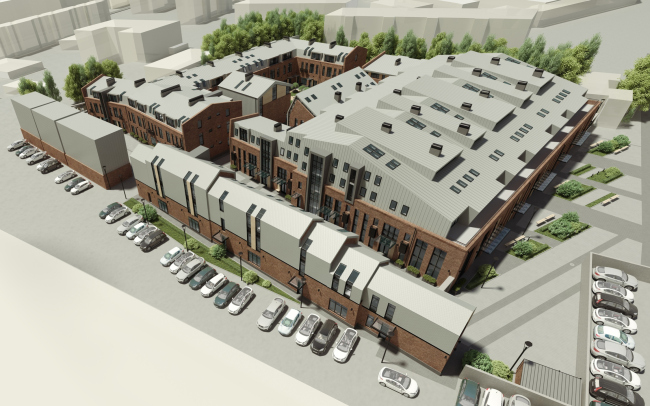
The idea to come up with something extraordinary sprang not (only) from
the commissioner's vanity. The thing is that the nearest neighbor of the former
plant is the residential complex "Triumph-Palace" - the 260-meter-high
skyscraper that claims to be stylistically close to the famous
"Stalin" high-rises. The future apartments are only separated from
"Triumph-Palace" by a narrow in-block driveway, and it is plain to
see that there is no rivaling this high-rise either in the dimension category
or in the housing class. However, the idea of making it clear that the new
complex has a completely different origin was still on the commissioner's mind,
and this is exactly how he formulated his specifications to the architects -
the project must become a "chamber" and cozy city block that would
hopefully offset, in an unobtrusive manner, the aesthetics of the
"elite" and "dwellers-only" residential complex
"Triumph-Palace". "The solution suggested itself: because of the
difference in the number of floors, our complex is turned to
"Triumph-Palace" with its roof, so what we did was turn it into its
fifth facade" - shares the leader of "T+T Architects" Sergey
Trukhanov.
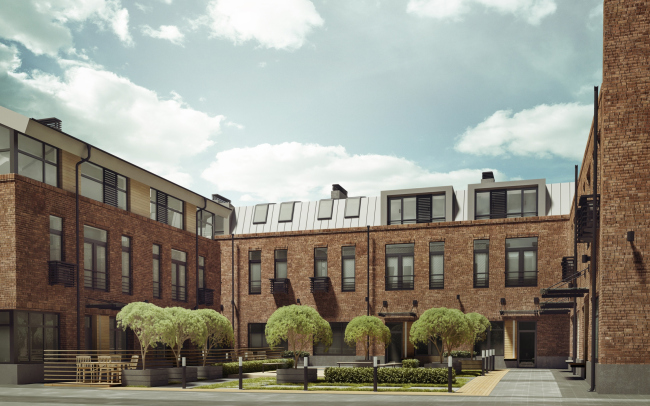
For inspiration the architects also turned to the immediate surroundings
- the five-minutes-drive-away artist village "Sokol" with its
two-storey housing, gable roofs, and quiet little streets became one of the
main starting points in creating the image of the new complex. As Sergey
Trukhanov explains, "T+T Architects" borrowed from the famous village
not some specific techniques and solutions but the very aesthetics of the old
"dachas" and country pastime. At the same time, the industrial origin
of the project prompted the loft style, while the decision to turn the roof
into the fifth facade made the architects turn to the contemporary Dutch
architecture that is in the habit of experimenting with the shapes of the
mansards. These presuppositions gave birth to the ideology of the complex: from
"Sokol" the authors are taking the peacefulness and the quality of
being "human-friendly", as well as the rhythm of the gable roofs,
reconsider them in the new materials and enrich them with the carefully
renovated brickwork. This is how Plant 408 turned into the loft block
"Studio8": the past gets a new life, gracefully growing into the
future.

Yet another challenge was about the fact that the factory buildings
turned out to be vastly different in their depth and configuration. One can see
here quite compact volumes of a square layout, the thin elongated little
"train cars", and a very large building in the center of the site
with a huge floor depth. This is why making a rough sketch of the style of the
future complex would not have been enough - the architects searched for a very
specific solution for each of the volumes. Part of the territory is cleared of
the old garages and dilapidated structures in favor of creating the public
space, an inner pedestrian-only square of Studio8, and organizing the parking
lot (although the architects were only able to get the necessary number of car
stalls at the expense of the more expensive automated parking garages).
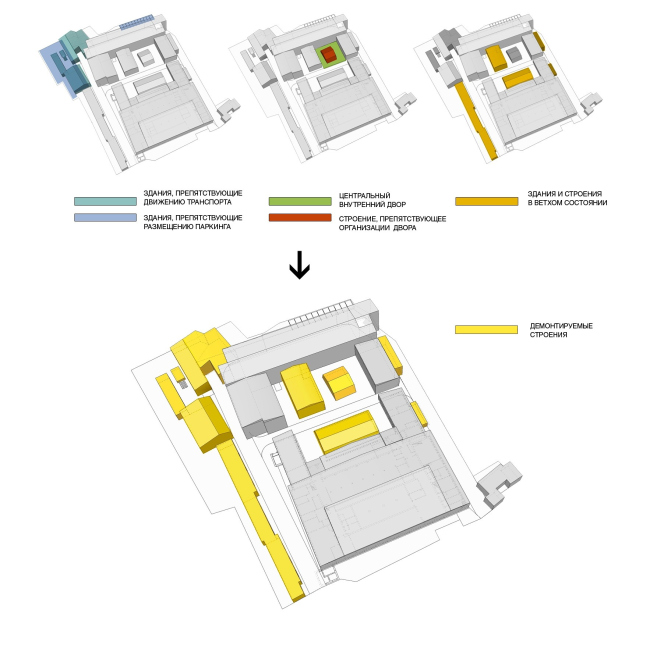
The buildings of the complex form a self-sufficient composition, some
sort of a city within a city that has in it, besides the main square, a few
nice little yards, alleys, and driveways. A particular role is played by the
so-called "Building B" - the narrow building of a strongly elongated
shape that in fact performs the function of the wall that separates Studio8
from Triumph-Palace: of course, there is no getting away from the direct visual
contact with the skyscraper - but on the ground level this building helps
demarcate the territory of the new complex. In much the same way, works the
elongated volume of the multilevel parking garage. This position at the
junction of two fundamentally different styles also left its mark on the
architecture of these two volumes: the car park faces the neighboring high-rise
with its neutral blind wall, while the facade of the residential building is
securely protected by the overhanging aluminum roof. Probably, this volume
would have looked as a blind zinc-plated wall, had the architects not fractured
it into separate sections that they deliberately placed in a staggered fashion.
The "friendly" appearance of the building is also enhanced by the
grand-scale glazing of its side facade.
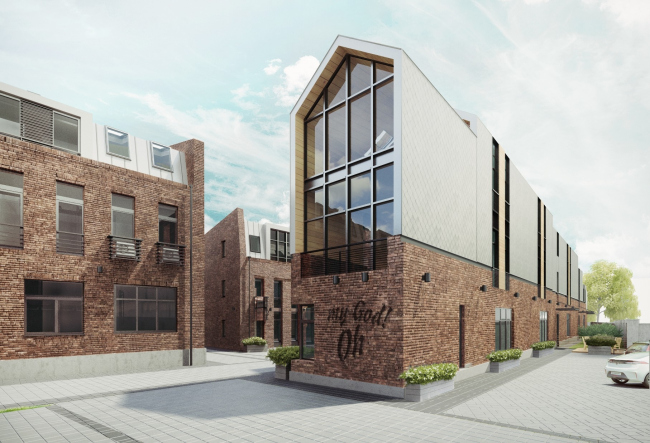
The most challenging task was finding the optimum solution for the
largest "Building A" that is almost
By the way, the word "accessories" is not a metaphor here. In their reconstruction project for the former plant, T+T Architects made provisions for every little detail: the options of the facade finish, interior design, and even the system of navigation around the complex. Even in the tiniest detail, be that the parking post, the fencing of the waste collection area, or the street sign, the authors carefully observed the "loft" style that they originally chose. The visiting card of the block will be the wall graffiti that will enhance its "industrial" origin probably even more eloquently that the traditional brutal brick walls.
